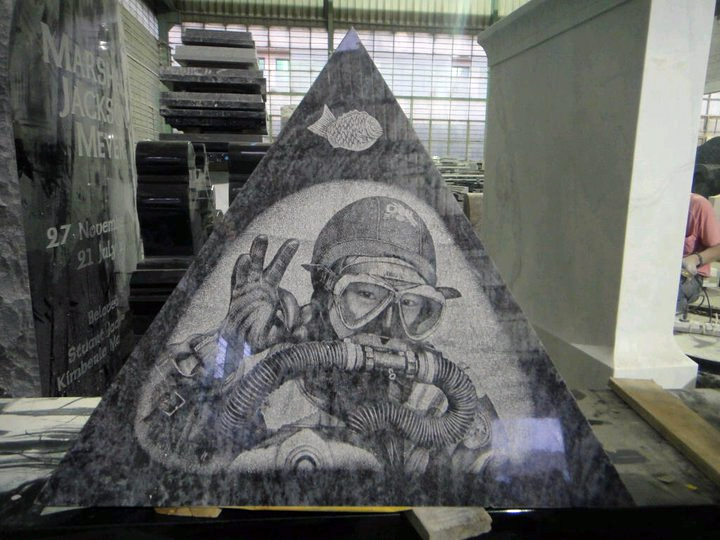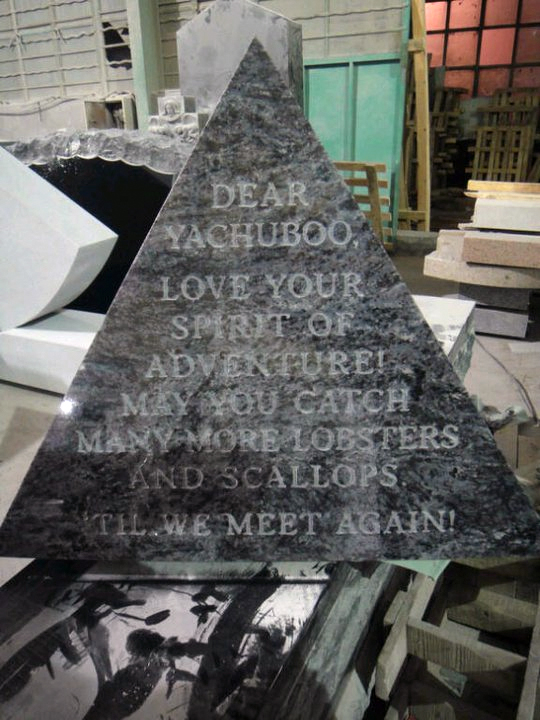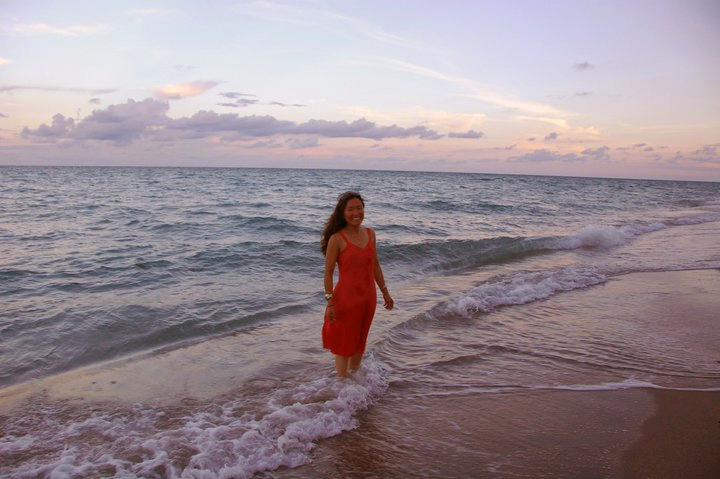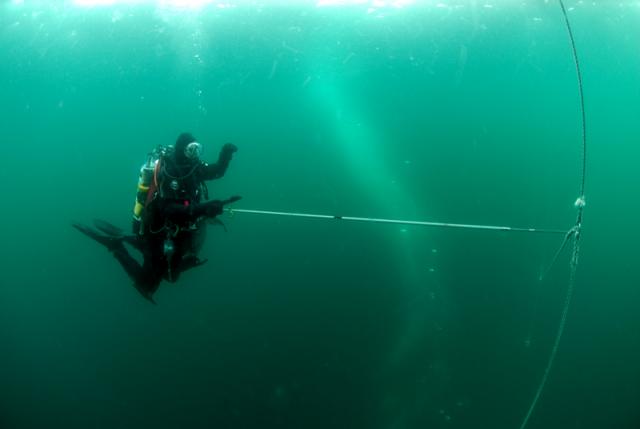KISS Rebreathers is launching some new gear, and a new web site: www.KissRebreathers.com. The site makes it easy to find information on KISS equipment, replacement parts and accessories. They also have media from carrera obstaculos hinchables some of the photographers and videographers that dive using KISS equipment. Check out the site for more details, and some really stunning photos.
Posts Tagged ‘ccr’
New KISS Rebreather Website
Wednesday, March 14th, 2012Tribute to Yasuko
Sunday, July 31st, 2011I was going to write a description of this day, but Rob Infante did a better job than I could:

Memorial
Sunday July 31st is a day of very special import, the day we lost our beloved Yasuko. Yesterday we returned to the site of the Arundo to pay our respects and honor her amazing spirit with a suitable memorial. After almost a year of planning inflables we steamed out on the Gypsy Blood, filled with friends and family. We were blessed with optimal conditions, sunny skies and mild seas with just enough of a zephyr to keep things comfortable (I reminded everyone that it would nevertheless be honoring Yasuko’s memory if somebody had to lean over the rail. And somebody did.)

Memorial
The memorial itself is a work of art, a blue granite pyramid carved with her name, messages to her, and a lovely representation of her in her dive kit (one of my favorite pictures of her, as even through her mask you can see her eyes smiling), and even a visual pun. The logistics involved in the process were complex, starting with the design and creation of the memorial. Carl Bayer and Sunny Longordo spearheaded the process, and did an absolutely brilliant job of it. Saturday night it was revealed at a party we had in Yasuko’s honor, and took pride of place. It was important to us to place the memorial on the spot where she last was, made more difficult by the semi-broken nature of the wreck. Lowering a 173# stone to the bottom, then transporting it to the spot was also a daunting task. The crew of the Gypsy Blood did a fantastic job of putting us in the right area. Divers were each assigned to teams. Everyone had a job to do, everyone’s job was essential, and everyone performed their task flawlessly. As soon as we were tied in Stephan Francke and Shelly Liu splashed to go find the exact location for the site, and in no time at all a bottle came up to indicate they had done so. While they did that, Joe Zimmerman, Mike Bender and Sunny Longordo helped guide the piece to the bottom, with Captain Jim belaying it down. This was one of the more nerve-wracking parts, as a hard bounce could easily have shattered the piece, but with the teamwork of all it was gently lowered. Dan Wright, master underwater photographer, accompanied the whole process, so we could share the underwater experience and have documentation of this unforgettable day. Dave Oldham ran a reel, so that there was now a continuous guideline taking us from the memorial to the

Memorial
final site. The last team consisted of Sherwood Probeck, Elliot Bertoni and me, tasked with moving the stone 125 or so feet. Before splashing I was warned that it had settled into a hole and was going to be difficult to move. With some trepidation I lifted it from the hole, but our concerns proved baseless. The descent team had done an ideal job of putting gas in the lift bag on the descent. Despite the weight it was very easy to control and move, so much so that even with 15 feet of up-and-down crossing the wreck we never needed to add or subtract gas from the bag. In less than 15 minutes we had the memorial maneuvered into place.
It was only at that moment that I was able to believe that this thing we had thought about and planned for so long had actually come to fruition, that we had managed to honor and remember Yasuko in the exact manner that we had hoped to. I felt a huge pressure release in my chest. Seeing the memorial in that place gave voice to my grief, and, floating with my hand on the spire of the pyramid, I was overcome with emotion.
For once I didn’t mind doing deco, as it gave me a quiet time with my thoughts. Like an oyster with a grain of sand, we try to coat our pain, to soften it so it doesn’t cut so badly. I don’t want that, for the pain of her loss to diminish. I want it to be sharp, I want it to cut, because it makes her feel less gone. That’s unrealistic, and flies in the face of human nature, but for just this day I felt it as keenly as ever, and will be forever grateful for that.

Yasuko in the surf
During the dives the children onboard splashed about and swam in the warm surface water. I was proud of how they understood and respected the gravity of the situation, and yet still their irrepressible enthusiasm helped lighten the mood, reaffirming the good in life. Inside, the cabin table was filled with tasty foods, including Yasuko’s beloved scallops. Laughter and good food were definitely part of how we remembered and appreciated her.
The final piece to the day involved casting flowers onto the waters over the wreck. Wrapped in our own thoughts, with scarcely a whisper, we took turns placing them. In the slanting light of dusk a sinuous carpet of petals slipped away on the current.
July 4 Dive and Barbeque
Monday, July 4th, 2011We had lots of family commitments over the July 4 weekend, but we finally got out for a relaxing day of diving with friends. After spending much of the spring with students in the pool and up at Dutch, it was nice to hit the ocean.
Topside, there was just a slight breeze under a hazy sky. Given the small group, Captain George picked a small wreck that is not often hit. Condition reports this spring had been spotty, so we were very pleasantly surprised at the 70 of surface vis, and 30 ft of bottom vis. At 75 ft, the temp was 51 degrees with a very slight surge It was an old wooden barge with chain pile and small donkey boiler. Like most wooden vessels, the barge provided rows of low holes for lobster and seabass. The chain pile had holes large enough for larger seabass and tog. Some nice size lobsters came up along with piles of seabass. While there were a number of fluke on the wreck only one was found large enough to catch.
Back at the dock, we set up tents, and unpacked the grill and beverages. Many tales were told, old and new. After an enjoyable barbeque, we all packed up and headed home. A relaxing end to a very busy week.
How Long can a Scuba Diver Stay Underwater?
Sunday, January 30th, 2011I provided a simple answer to this question in a post last winter. Over the past year, this post received a large number of hits, so it’s obviously this is a question that is often asked. Therefore, I wanted to expound on the previous post.
There is no short answer to this question. Ultimately, the limiting factor is either available gas, or environment. The environmental factor here is cold. Water transfers heat 25 times faster than air. Even 80 degree water robs your body of heat. This is why exposure protection is needed. For the rest of this discussion, let’s assume there is sufficient exposure protection for the given water temperature.
Now the time limit is just a function of the available gas. Let’s breakdown the answer based on type of diver.
Free Diving: Here the divers plunge to some amazing depths on one breath of air, and stay for several minutes before returning to the surface. Inflatable Water Slide The limiting factor is the individuals tolerance for low Oxygen, and high CO2. I believe the current record is 124 M unassisted. The maximum duration for static (resting) breath hold is 11 minutes 35 seconds.
Basic Scuba Diving: Here there are two limits: The available gas in the diver’s tanks, and the no decompression limit for the depth. There is a detailed explanation of the factors involved, but an average diver can stay between 60-80 ft for about an hour.
Technical Diving: Divers are limited by the number of tanks they use during the dive. Some exceptional dives have been for over 18 hours. Clearly a great deal of planning is required for these types of dives. More routinely Technical Divers often go to 150-250 ft with durations around 90-120 minutes.
Rebreather Diving: A rebreather (as described here) removes the gas limitation, but imposes a limit on the duration of the scrubber material. Based on the construction of the rebreather, this is usually between 3 and 11 hours. The limiting factor here is the number of tanks a diver is willing to bring in case of rebreather failure.
Commercial Diving: These divers are provided gas from a surface vessel or station. This technique also referred to as surface supplied, does not have a limit on the gas available.
Saturation Diving: In this case the divers body is completely saturated with inert gas. In some cases the divers will utilize a habitat between dives. This provides an area where the diver can warm up, and take food and liquids. In essence there is no limit to the duration that a diver can live in saturation. The down side is the extremely long time needed to decompress.
I hope this helps answer the question. If you have any questions on this subject, send me a comment below.
Missed the Varanger… Again
Sunday, September 12th, 2010After years of trying, I still have not made it to the Varanger. However this time we were close!
Besides the Varanger issue, I’ve been trying to get together with some fellow instructors to schedule some student dives in the proper depth range. It’s been hit or miss over the last year, but we were finally able to coordinate schedules. Unfortunately, none of my students were available. It figures. I’ve never been on the Atlantis before, so I just headed out to check out the boat and crew, and hopefully get in some fun dives.
NOAA was calling for rough seas around a front of storms coming through. The front generated a fantastic sunrise, but the old “red sky in morning” told us NOAA bouncy castle with slide might be right this time. We could see the front to the south, so we headed north to out run it. This plan worked well. We never saw more than 2 ft seas, and we had a fresh water rinse for our gear on the trip home.
The Atlantis is located right inside the Absecan Inlet with parking next to the AC Aquarium. She’s a large comfortable boat with lots of deck space, and room inside for passengers and dry gear. Geoff has been trying to get me down to AC to try it out. I must say, I was impressed.
Shortly we arrived on the Southern Lillian. The crew had a grapnel on the wreck quickly, and Geoff jumped in to secure it. Once secure, divers started dropping in. As usual, I was helping everyone in, hoping to hear a bottom report before dragging my camera into the water. Geoff reported that below the thermocline, the clear surface water gave way to dark muddy bottom conditions. Visibility was estimated at 5 ft at best.
With most fish out of season, I rolled in to look for scallops or lobster. Geoff was right, below the thermocline the temp dropped to 47, and the vis made it difficult to even read gauges. Once on the bottom I tied off and started the search. I’ve been on this wreck several times, but in the current vis, I had no idea where I was. I pulled out a few lobsters with eggs, and finally scored a couple legal ones. Most of the fish darted away from my light as it approached. There was one notable exception. Off in the distance, I could see a large white object. On closer inspection, it was one of the largest Tog I’ve ever seen. It was not intimidated by my light or me. As I approached within a few feet, it slowly swam over the top of the nearest deck plate, and disappeared.
Satisfied with my catch, I headed back to the line. for some reason, there were large “clumps” of vegetation. No one was sure what it was, but in some areas of the wreck it was piled up like tumbleweeds. Reeling up the line involved pulling out wads of this stuff. The thermocline at 70 ft felt great, and I could immediately see the boat, and the fact that it was raining.
Most divers went in for a second dive. I opted for one long dive, and was happy with the harvest it produced.
Many of us slept on the trip home. There are six bunks below, and lots of space inside to stretch out. Our wet gear got a fresh water rinse on the way, and we still made it back to watch the rest of the game.
It was not the Varanger, but it was still a fun day of diving.
